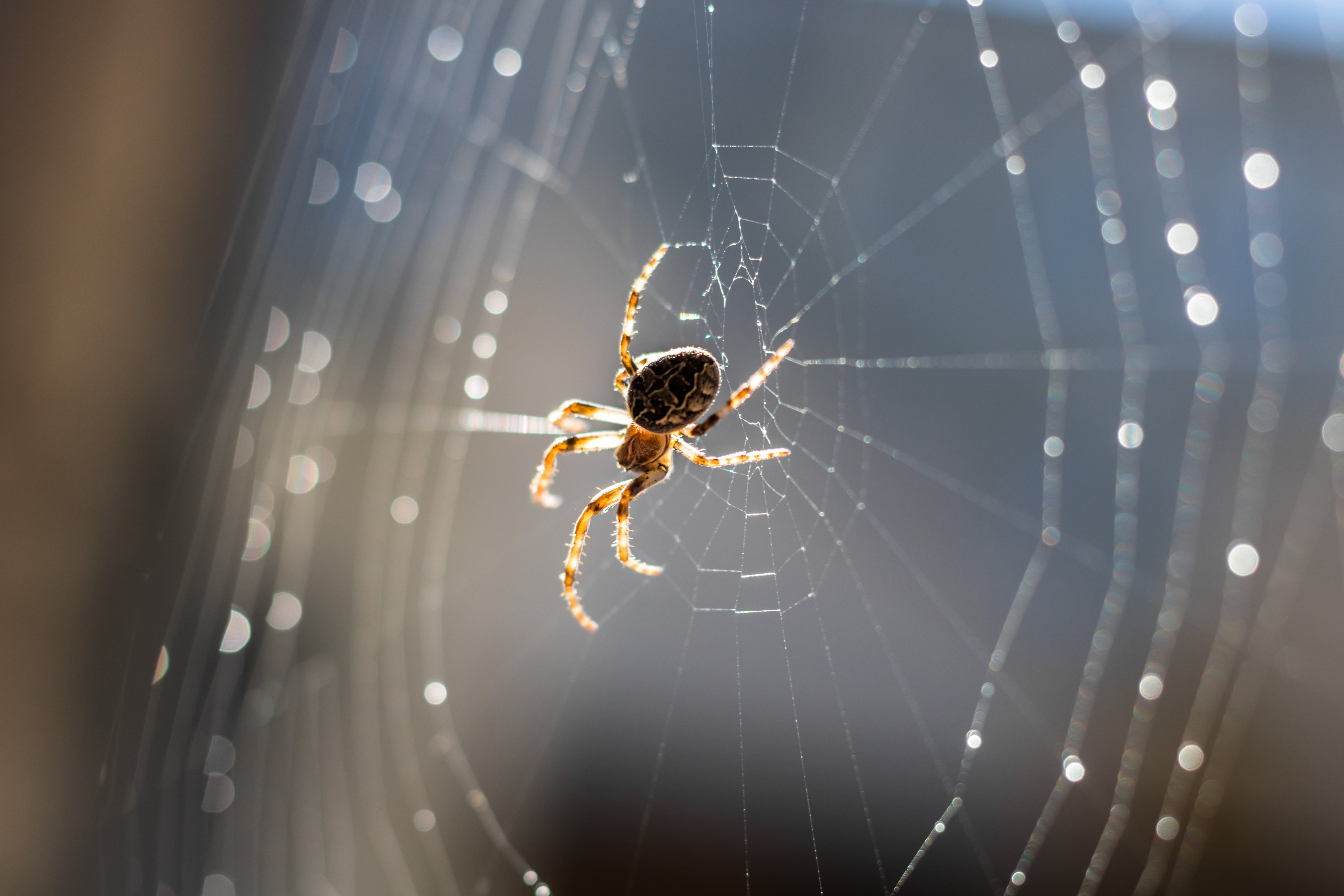
Karen Hopkin: This is Scientific American’s 60-Second Science. I’m Karen Hopkin.
Some things are SO adorable, we say they’re cute as a bug’s ear. Of course, bugs don’t have ears. But a new study shows that orb-weaving spiders can use their webs to detect sounds. The findings are unfurled in the Proceedings of the National Academy of Sciences.
Ron Hoy: Any animal that makes sounds is likely to have an ear.
Hopkin: Ron Hoy studies neurobiology and behavior at Cornell University in Ithaca.
Hoy: …ranging all the way from tiny crickets, and flies that are even smaller than crickets, all the way through to humans of course.
Ron Miles: It’s also pretty interesting that a great many animals don’t have eardrums. But they still hear.
Hopkin: That’s Ron Miles.
Miles: The two Rons, here.
Hopkin: Ron Miles, who’s been collaborating with Ron Hoy for 30 years, is an engineer at Binghamton University…
Miles: …an hour’s drive away from Cornell.
Hopkin: Critters lacking eardrums receive audio input very fine hairs.
Miles: If you look at spiders and insects, they’re covered with hairs.
Hopkin: Because these whispy little filaments can float freely in the breeze, they’re great at sensing the air currents that comprise sound waves.
Miles: Since we knew that so many animals like small insects and spiders have hairs that can sense sound, … we were kind of wondering how would you make something that could sense sound the way that some of these small animals do.
Hopkin: A possibility appeared during an afternoon stroll.
Miles: My graduate student, Jian Zhou, was walking in our campus nature preserve one day and he noticed when the wind blew, if you look at a spider web, it moves with the wind. And he thought maybe a fine spider web or spider silk could act as a sound sensor.
Hopkin: To find out, the researchers coaxed a spider into giving them a bit of silk…
Miles: … and we played sound at a little strand of spider silk and found that when the silk is very thin, it moves with the air in a sound field amazingly well… over a wide range of frequencies, from 1 hz to 50 khz. So we knew then that the spider silk was sort of an ideal, perfect sound sensor.
Hopkin: That was eye-opening for the researchers…but is it ear-tickling for the spiders?
Miles: So we set out to try to figure out if the spiders were actually able to hear sound using their web. And this was a hard question to answer.
Hopkin: For one thing, they had to find a way to get a whole web into the special soundproof chamber in the basement of the lab building.
Miles: You know, spider webs are very delicate. You can’t go out in the woods and find a spider web and grab it and take it home. It’s attached to things. And it’s not easy to get it intact.
Hopkin: Especially those made by the industrious orb-weavers…spiders like the title character in Charlotte’s Web.
Hoy: We’re talking about quite a spectacular web. It’s this wheel-shaped web that is around upstate New York…if you walk through any field, you’ve either gonna walk through one or you’re gonna see it and avoid it because they’re big. It can get as big as a yard or a meter across.
Hopkin: So Jian Zhou and fellow student Junpeng Lai came up with a way to get custom-made webs custom to go.
Miles: What they did is make a little wooden frame… kind of the size of a decent sized picture frame…and they placed this frame on the windows of our building.
Hopkin: The lights in the building attracted bugs…and the bugs attracted spiders.
Miles: So…the spiders built their webs on the frames. Then in the morning, my students would go and collect the frames and basically hijack the spiders and take them over and put the frame in the…chamber intact.
Hopkin: Now, how can you tell whether a web functions as an arachnid hearing aid? One way is to keep an eye on the spider’s brain.
Hoy: My lab, the neurophysiologists, made some recordings from the nervous system sensory system that showed that indeed you get an acoustic response in the nerves to sound…coming from a speaker a little more than a meter away.
Hopkin: But even more revealing was how the spiders acted.
Hoy: To very loud sounds, you could get a strong response…the spider would either flatten out or it might actually crouch. But it’s really hunkering down. That is indicative [to a biologist] of an alarm response.
Hopkin: And when serenaded with sounds that are maybe 10 decibels or 100 times softer…
Hoy: Without changing its body posture or making any other movements, it might simply raise its front two legs off of the web.
Hopkin: That leg lift, says Hoy…
Hoy: …is a spider’s way of maybe putting two more sensors out there to see what’s coming. We don’t know that yet. But that response to a very soft stimulus might be simply the spider’s reaction to, “I know something’s out there, I heard it, but I need more information.” So…that’s essentially the demonstration that was needed to show that spiders can hear sound.
Hopkin: This filamentous approach to acoustics could someday change the way we make microphones…and take webcasting to a whole new level.
For Scientific American’s 60 Second Science, I’m Karen Hopkin.
[The above text is a transcript of this podcast.]
